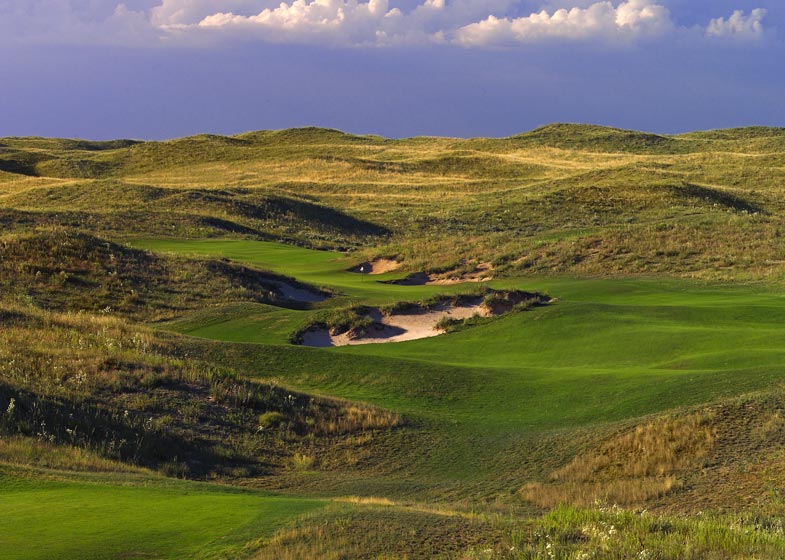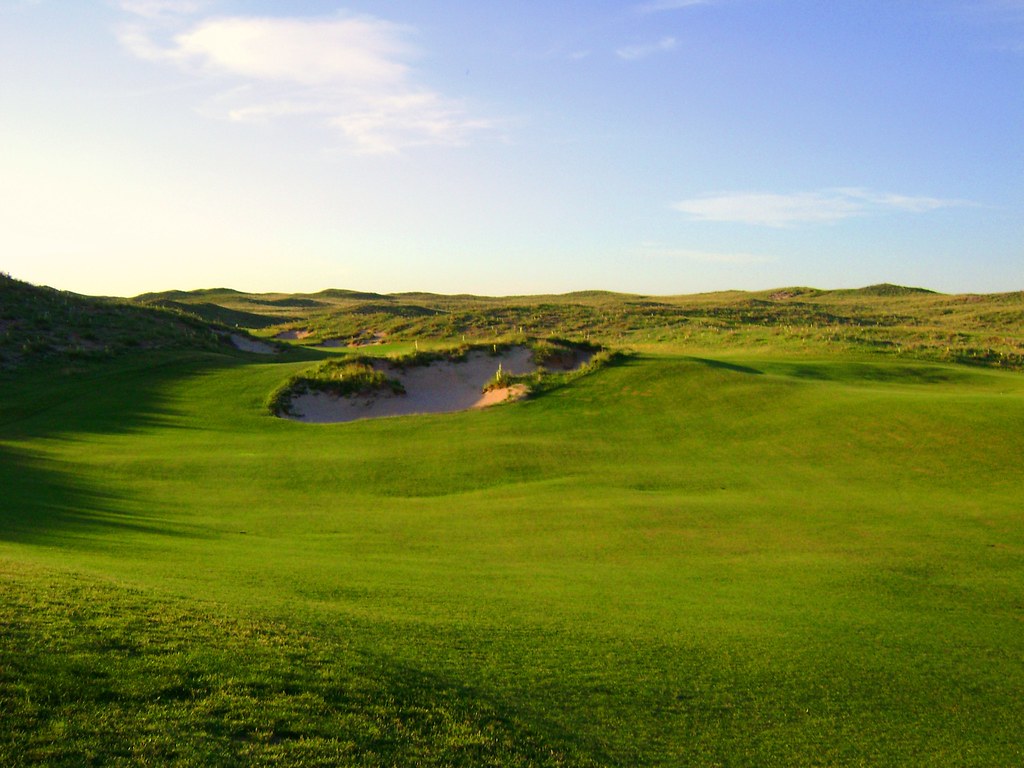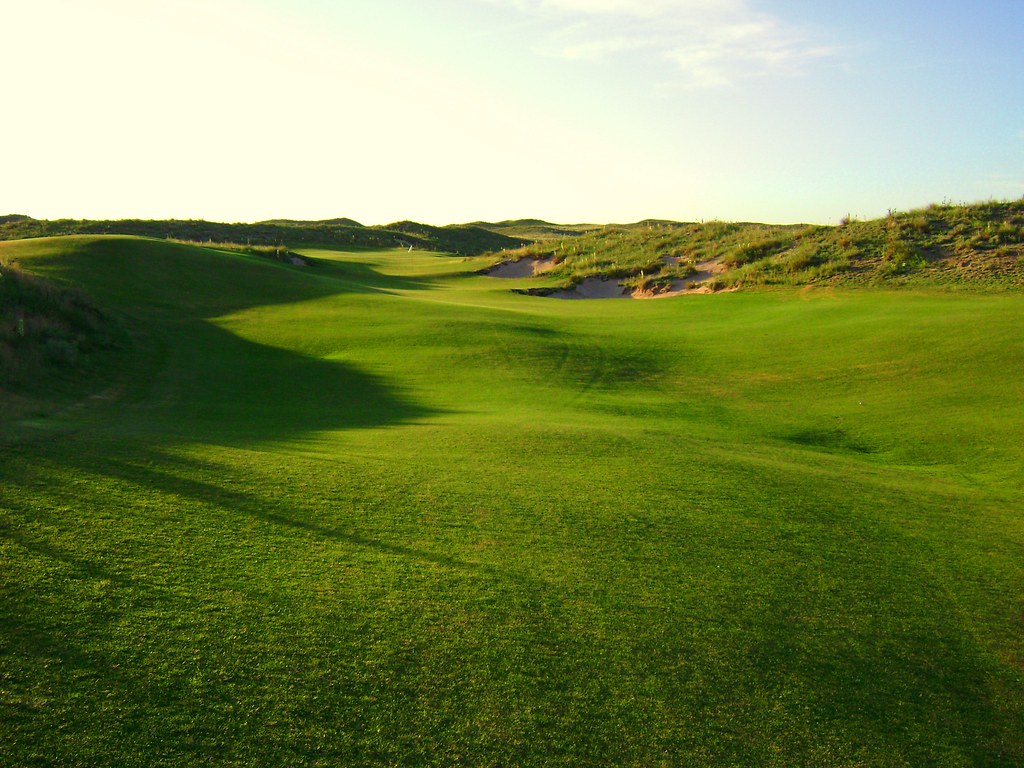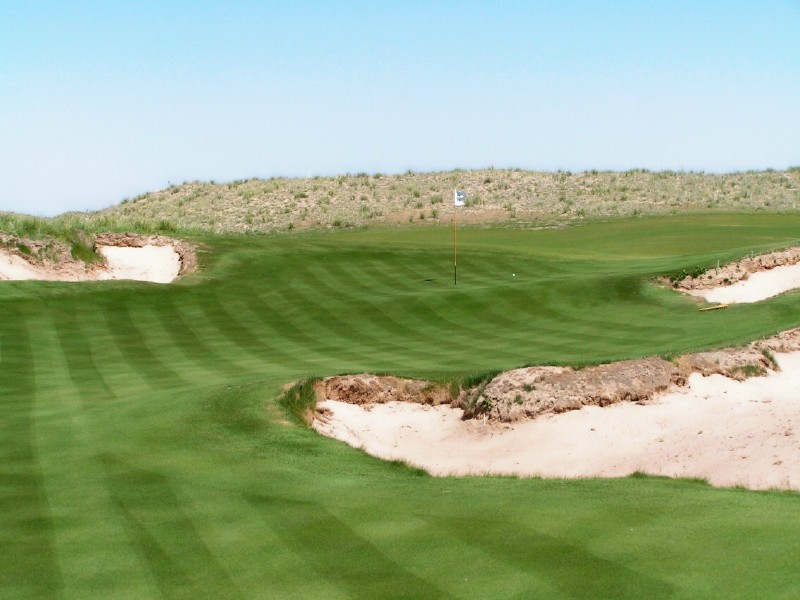Hole #7: “352 yards”
During my photographic jog around Ballyneal the evening before my rounds, the sight of this hole left me with a grin a wide as any I’ve shown on a golf course. It was also the only place on the course populated by humans during my tour -- a threesome was teeing off on 7 as I took pictures of the 6th green (two of them were scheduled to caddie dual loops for my father and I the next day). All of them employed different strategies on the 7th.
What a superb design. Playing as short as 285 yards from the forward tees, the hole is drivable even for medium-length hitters from the tips, when conditions are favorable.
This spectacular depiction taken from the Ballyneal website captures much of the 7th's allure. The prominent sand trap in the left-center of the fairway is a 240-yard carry from the long tees. There is plenty of room short, to the right, and past the right edge of the bunker. The 4th fairway touches the rear of the 7th green complex, allowing for a sneak preview and a chance to carefully select the best way to tackle this puzzler.

As one approaches the bunker, the view of the flag disappears (assuming one could see it from the tee, a view only afforded by front pin locations). Coupled with the uneven ground and the need to hit a high shot to clear the hazard, this is probably not the ideal place to lay up. If you hit into the bunker, say hello to the bogeyman. Playing right of the bunker leaves one with a full wedge with a backstop behind the front and middle pin positions.

Past the bunker, the fairway slope is predominantly from left-to-right. The entrance is widest from this angle, but the slope on the left side of the green cannot be used as a backstop. Any approach shot that misses to the left will be well above the green. Good luck stopping your ball on the surface from there.

Playing a driver or 3-wood to just short of the green might result in an unpleasant kick into the right front greenside bunker. It might also leave an awkward pitch from a tight lie in the fairway.

The 47-yard deep, three-tiered, E-shaped putting surface is true original, or at the very least it is unlike any other that I've seen personally. Regarding its construction, Tom Doak stated earlier in this thread
“…when I finally came up with the idea for the shaping of the green, Brian Schneider was the only one down in that part of the course, and he was on the excavator instead of the dozer. So, I had him dig out the bunkers and just use the cut to hold up the slope of the green and create the small tiers ... he just placed the material and then tracked over it with the excavator to make the contours of the green. It took about half a day to build after I'd stared at it for about a year trying to figure out what to do with a long, narrow half-pipe of green site.”
This photograph from the golfclubatlas.com course profile shows the slope left of the green. From this angle, a pitch is required to reach the back tier. One also has the option of chipping or pitching into the slope left of the green at an angle that will feed the ball back to the right to access a middle pin position. Recovery from either of the right hand bunkers will usually prove easier than from the shortgrass or bunker found above the green on the left.
